2018 Honda Amaze review, road test
With an increase in size and premium appeal, the new Amaze is a very competent compact sedan.
Published on Sep 13, 2018 06:00:00 AM
1,33,194 Views
Follow us on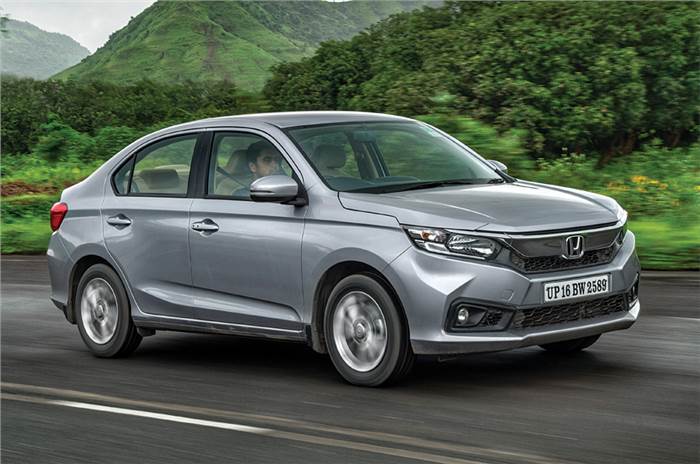

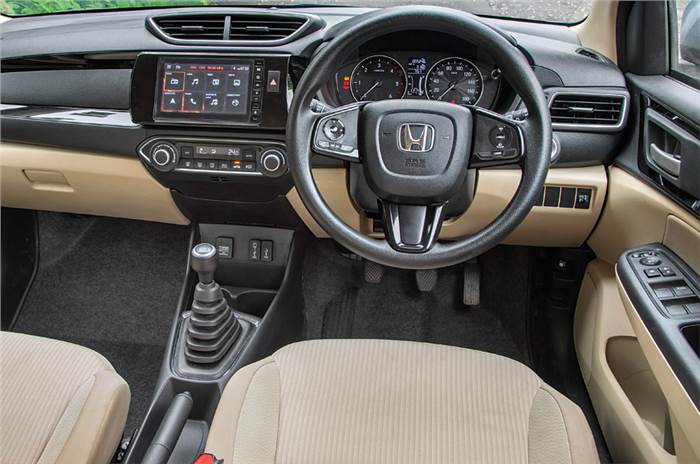
Big improvement in terms of build, quality and fit-finish of the interiors over the first-gen Amaze.
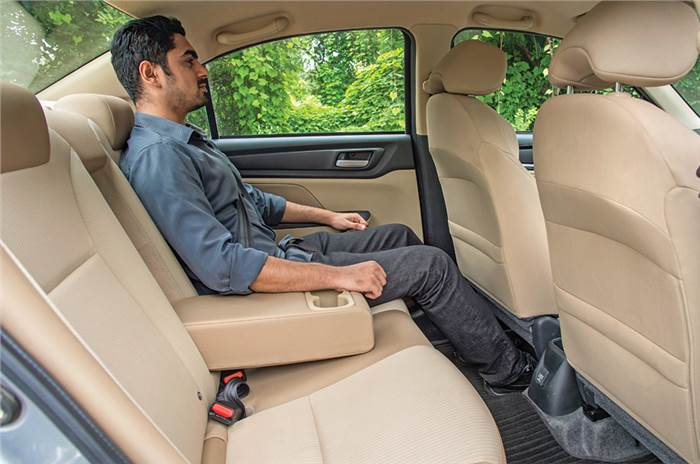
In terms of comfort and space, this has the nicest backseat in its class.
Honda has delegated the familiar 1,199cc, four-cylinder petrol engine and a 1,498cc four-cylinder diesel engine to power the Amaze. While the petrol unit makes 90hp and 110Nm of torque in both, the five-speed manual and the CVT, the diesel makes 100hp and 200Nm of torque with the five-speed manual, but a slightly lower 80hp and 160Nm of torque with the CVT. This time around, Honda claims to have improved overall sound insulation and has redesigned the engine block, used a different head cover material and optimised the engine mounts, all in the interest of keeping a check on the noise and vibration levels inside the cabin. While the petrol engine remains extremely refined at idle, the diesel is noticeably quieter and more refined than before. It’s only when the motor is revved harder does it get vocal; but even then, it’s more of a drone than a diesel clatter that can be heard inside the cabin. It isn’t all good news, though, as vibrations are still felt on the pedals and steering of the diesel Amaze.
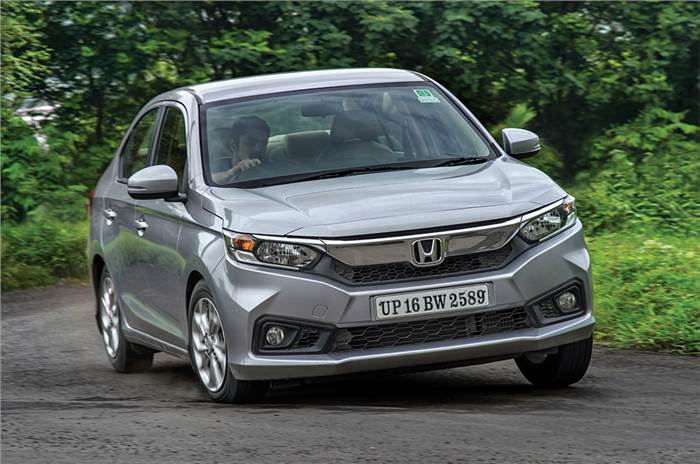
In terms of its characteristic, the diesel engine remains unchanged. It’s responsive from the word go, and, being a big engine in a light car, it feels effortless in the way it performs. Turbo lag is negligible and those who drive in higher gears at low engine speeds will love the unit’s linear yet effortless nature. Spin it past 2,000rpm and it pulls ahead with a sense of urgency. The wave of torque continues all the way until 4,300rpm, after which power cuts off abruptly. This engine maxes out at 142kph (like before) and feels as though it has hit a wall – like the engine has been restricted even though it feels capable to go faster. 0-100kph is a significant 2sec quicker than the outgoing version, and even in-gear times are much faster. It’s worth noting that the gear ratios haven’t been changed, so the credit for this improved performance goes to the engine tuning and the kerb weight, which has reduced by 52kg. The clutch travel, however, is a bit long. The pedal is eager to spring back up when depressed and the release point is high. The five-speed manual has short throws and slots into the gates smoothly, although, not as smooth as some of its rivals.
The diesel with the CVT makes 20 percent less power compared to the manual and Honda says that this was done to prevent belt slippage and preserve the life of the transmission. For regular city driving, the CVT is just so convenient and paired so well to the engine that the power deficit isn’t noticeable. There’s always power available on tap, it shifts ratios extremely smoothly and is fantastic in the way it operates. It isn’t jerky in its operation like an AMT and neither does it get confused at lower speeds. Mash the throttle hard and the CVT instantly reacts by holding revs at 3,700rpm as the car builds speed. Acceleration is just 0.8sec slower than the manual and top speed is locked at 143kph.
| Honda Amaze Price, Mileage, Specifications, Features and Variants | |
|---|---|
| Brand | Honda |
| Model Name | Amaze |
| Honda Amaze Price | ₹ 9.07 - 12.74 lakh |
| Honda Amaze Range/Mileage | Petrol : 18.65 - 19.46kpl |
| Honda Amaze Specifications | Sedan | 4 doors | 5 seats View All Specs |
| Honda Amaze Features | LED headlight | 8-inch Touchscreen display | 6 airbags View All Features |
| Honda Amaze Variants | V MT | VX MT | V CVT View All Variants |
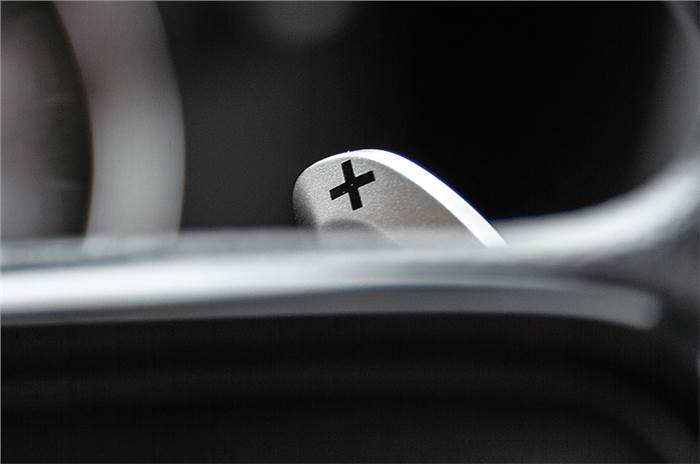
The petrol engine is very refined in the way it does the job. It delivers a satisfactory performance in the city. There are prominent tugs in power beyond 2,000rpm and 3,500rpm, and this engine feels most energetic beyond 5,000rpm, spinning all the way until 6,700rpm. Those who love driving will love to rev it hard, but most users will find the performance at mid revs to be weak. Honda has tweaked the gear ratios of the petrol-manual which now gets a taller final drive but shorter first, second and third gears (for better acceleration). The fourth gear is significantly taller and this is noticeable while trying to overtake traffic at highway speeds. 40-100kph in fourth gear takes an agonising 25.26sec. If the momentum breaks on the highway, the petrol warrants a downshift to build speed again. Overall acceleration timings are almost identical to the older car, but the top speed is now 146kph. Like the diesel, the clutch travel is a bit long and its springy characteristic demands a conscious effort to drive smoothly.
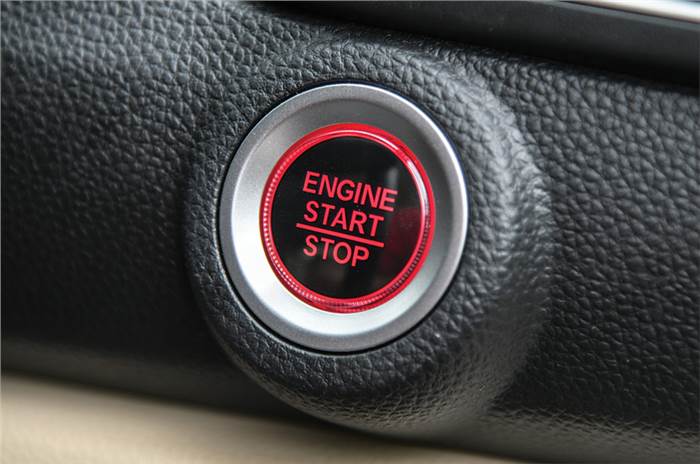
The CVT paired to the petrol does a far better job than the manual in delivering the power. The spikes in power delivery are masked well and this extracts the best performance from the engine. It is keen to upshift and keeps the engine revs low in the city. Put your foot down, and it’ll hold revs at 6,000rpm, as the speedo needle climbs rapidly. There’s also a Sport mode on offer that keeps the car in a lower ratio, thus keeping the engine on the boil. Acceleration is significantly quicker, with the CVT managing 0-100kph 2.5sec quicker than the first-gen Amaze with a five-speed torque converter. The paddleshifters are nice to use and react well to inputs; these are particularly useful when there’s a need for engine braking or for a more involving feel.
Copyright (c) Autocar India. All rights reserved.




.jpg&w=234&h=156&q=90&c=1)

Comments
Member Login
Personal Details
No comments yet. Be the first to comment.